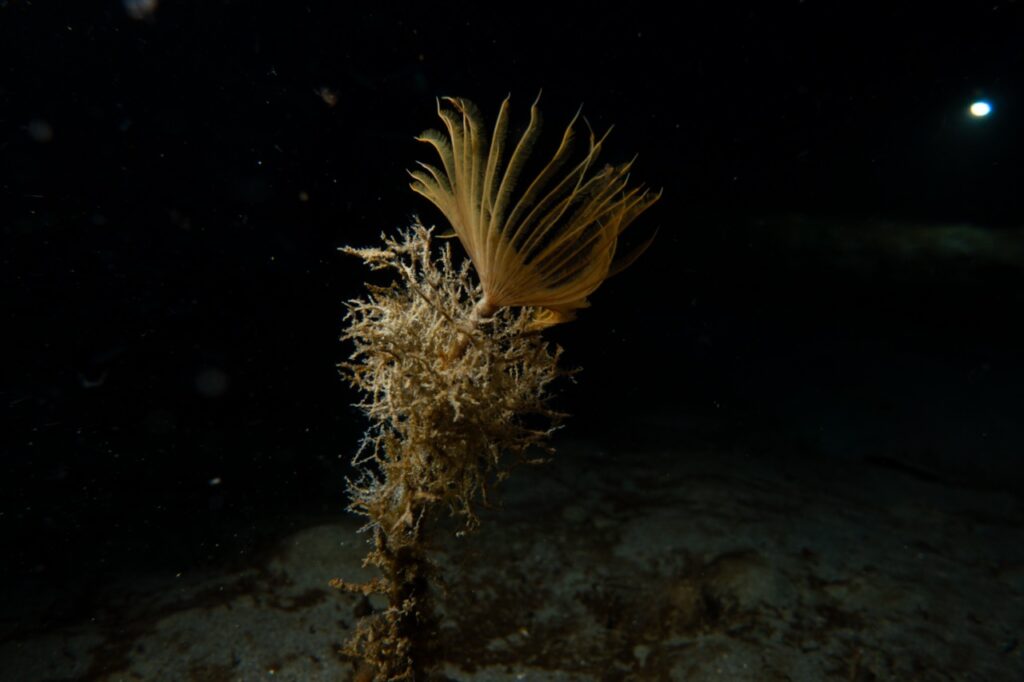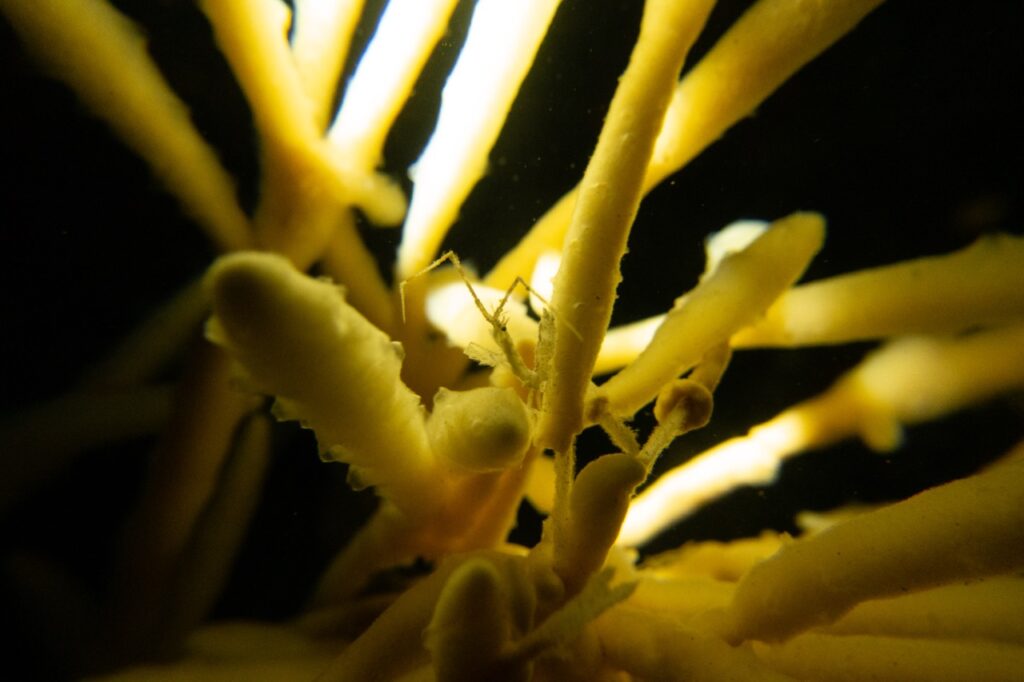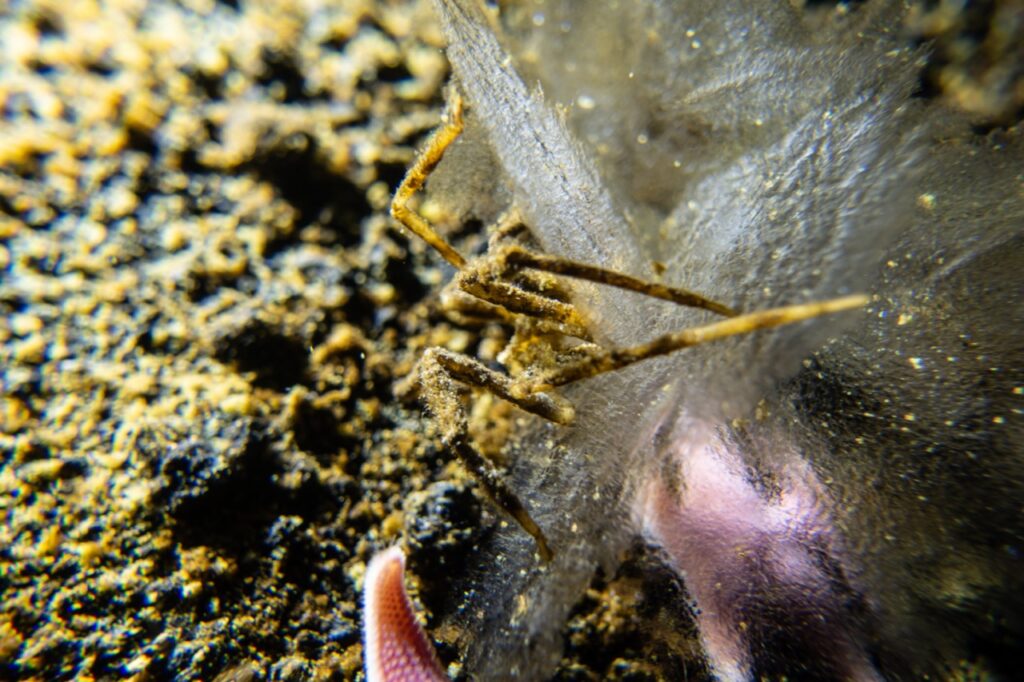So far this season, we have shown you some of the incredible fauna present under the ice in Antarctica. A lot of animals in Antarctica are significantly larger than their global counterparts because of the extremely high oxygen content in the cold waters here. Although the large fauna is incredibly unique and endlessly photogenic, I spent the last week capturing images of the smaller under-sea animals to show you how amazing the little things in Antarctica are as well.
To capture images of the smaller animals in McMurdo, I used macro photography, which uses a magnified lens to show very small living organisms. As someone who studies microbiology, I appreciate any chance to show small, yet incredibly important life. Although not microbes, these creatures are fascinating and beautiful.

An anemone of the Clavularia genus. These anemones are an average of 8 mm tall, and were probably around that size in this picture. Antarctica has an abundance of anemones, including Edwardsia beds at our very own Cinder Cones Seep!

A sabellid polychaete, or feather duster worm (yes, it’s a worm!) filter feeding with its feathery radioles. The radioles of a feather duster worm have combs that pick up food from the environment. Sabellids are tubeworms, using the substrate from the environment to encase itself.

Likely an isopod from the Arcturid genus. Arcturid isopods are commonly found on sponges of the Homaxonella genus, which is exactly what you’re seeing here! They perch and filter feed on detritus passing by.

A little sea spider hiding in the crook of an anchor ice bed. This sea spider was small, but sea spiders in Antarctica can be bigger than a dinner plate!

